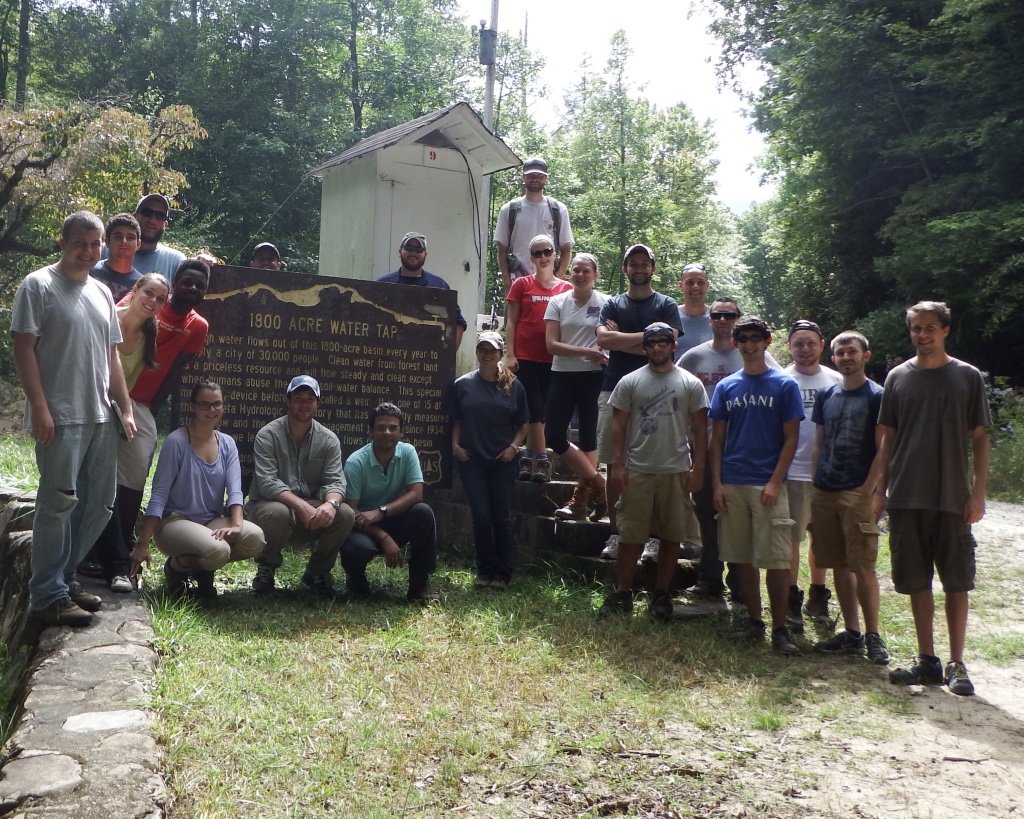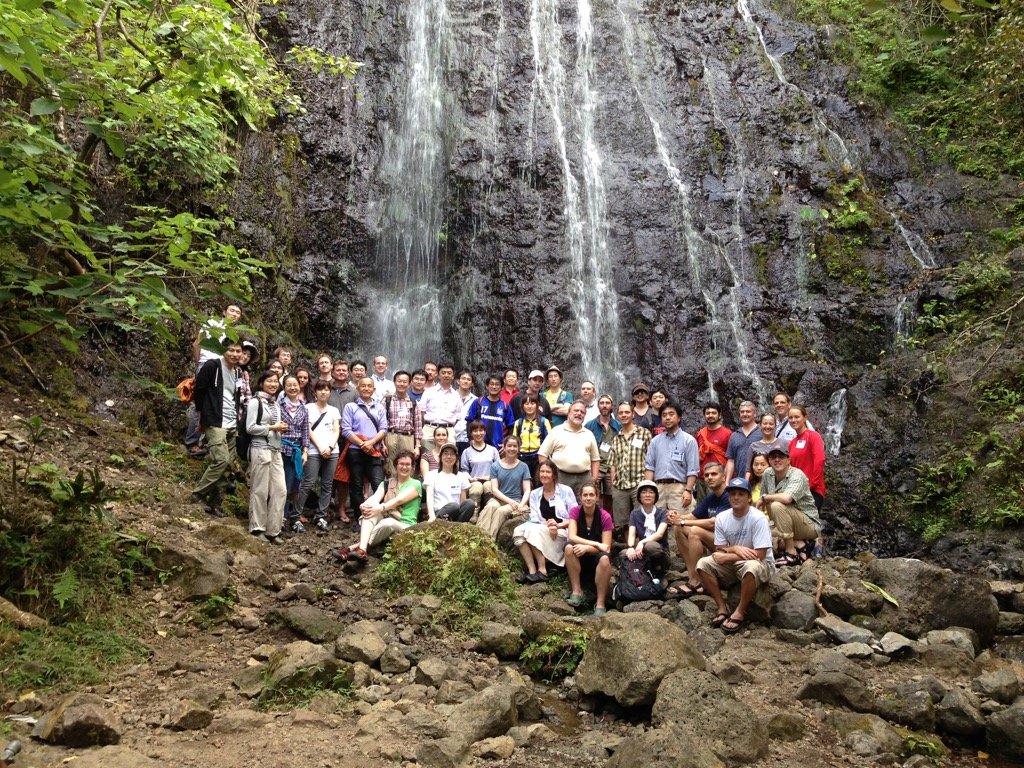Watershed Ecohydrology
Coupled ecological and hydrological processes at the watershed scale
Researchers hike through Tenderfoot Creek Experimental Forest, 2012.
Hydrological and ecological processes are interdependent on one another. For example, streamflow can be strongly affected by plant water uptake, and forest health can be governed by water availability. We spent years studying these two-way interactions between water and life through field studies and computer modeling in different types of forested ecosystems. We studied links between snowmelt, carbon uptake, and streamflow at Tenderfoot Creek Experimental Forest in central Montana, and we examined how terrain, climate, and vegetation affect streamflow at Coweeta Hydrologic Laboratory in western North Carolina.
NC State University students touring Coweeta Hydrologic Laboratory, 2014.
Early work took place in the late 2000s and early 2010s, and it focused on the spatial heterogeneity of ecohydrological processes in small, forested watersheds. We learned how tree water use varies across landscapes - impacting plant water stress, tree health, groundwater, and runoff along hillslopes and at larger spatial scales. In the mid-2010s, we began to analyze large, national datasets to study the long-term impacts of climate change on streamflow in larger watersheds and landscapes representing various combinations of terrain, vegetation, and climate.
As a whole, this work is helping to expand the field of ecohydrology from its early focus on water-dependent ecological processes to a more robust - and spatially explicit - study of the bi-directional relationships between ecological and hydrological processes. In 2013, Ryan was invited to discuss these bi-directional relationships at the US-Japan Joint Seminar on Catchment Hydrology and Biogeochemistry. In 2016, Ryan discussed the need for field-based research at a Congressional briefing on water sponsored by the University Corporation for Atmospheric Research.
2013 US-Japan Joint Seminar on Catchment Hydrology and Biogeochemistry, Oahu, Hawaii.
Key personnel on this project have included Fabian Nippgen, Kendra Kaiser, Andrea Medenblik, Nitin Singh, Wilmer Reyes, and Josh Rice. Students from Appalachian State University, Montana State University, NC State University, University of Nebraska, and University of North Carolina participated in an intensive field course offered in 2010, 2011, and 2013. Collaborators included Brian McGlynn (Duke University), Diego Riveros-Iregui (University of North Carolina), and Jim Vose (US Forest Service).
Select Outcomes
-
Research Article: Rice JS, Emanuel RE (2019) “Ecohydrology of Interannual Changes in Water Storage” Water Resources Research
Research Article: Reyes WM, Epstein HE, Li X, McGlynn BL, Riveros-Iregui, DA, Emanuel RE (2017) “Complex Terrain Influences Ecosystem Responses to Temperature and Precipitation” Global Biogeochemical Cycles
Research Article: Singh NK, Emanuel RE, McGlynn BL (2016) “Variability in the isotopic composition of baseflow in two headwater streams of the Southern Appalachians” Water Resources Research
Research Article: Nippgen F, McGlynn BL, Emanuel RE, (2015) “The spatial and temporal evolution of contributing areas” Water Resources Research
Research Article: Emanuel RE, Hazen AG, McGlynn BL, Jencso KG (2014) “Vegetation and topographic influences on the connectivity of shallow groundwater between hillslopes and streams” Ecohydrology
Research Article: Kaiser KE, McGlynn BL, Emanuel RE (2013) “Ecohydrology of an outbreak: mountain pine beetle impacts trees in drier landscape positions first” Ecohydrology
Research Article: Emanuel RE, Riveros-Iregui DA, McGlynn BL, Epstein HE (2011) “On the spatial heterogeneity of net ecosystem productivity in complex landscapes” Ecosphere
Research Article: Emanuel RE, Epstein HE, McGlynn BL, Welsch DL, Muth DJ, D’Odorico P (2010) “Spatial and temporal controls on watershed ecohydrology in the northern Rocky Mountains” Water Resources Research
-
-


